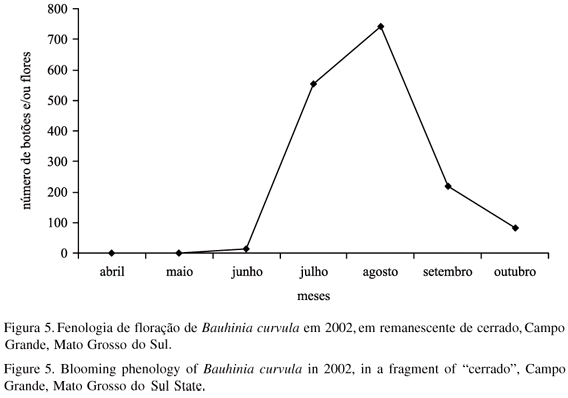The reproductive biology of Bauhinia curvula was studied in a " cerrado" fragment in Mato Grosso do Sul State, Brazil. Bauhinia curvula is a shrub that blooms during six to seven months (July to November/December) and has a subterranean stem whith regeneration function. The flowers are white, hermaphrodite, zigomorphic, with nocturnal anthesis, they exhale unpleasant odor, and last about 11 hours. The stigma is wide and located above and/or in front of the anthers that presents pollen with 98.5% of viability. Nectar is produced in the hipanthium, with 26 µL medium volume and solute concentration around of 15%. Although flowers of B. curvula have several characteristics related to both chiropterophilous and sphingophilous syndromes, the small nectar volume and the narrow nectariferous chamber entrance seems to discourage bats visits. Bauhinia curvula is self-incompatible and depends on pollinators, therefore it did not bear fruit after spontaneous self-pollination. The studied population presented reduced reproductive effectiveness (0.07), probably due to pollen limitation. Agrius cingulatus (Sphingidae) was the only flower visitor which presents visiting behaviour, body size and proboscis length appropriated to effective pollination. This fact aid in a medium to long way the autogamic genotipe selection.
cerrado; pollen-limitation; regeneration; sphingophily; subterranean system





